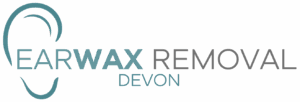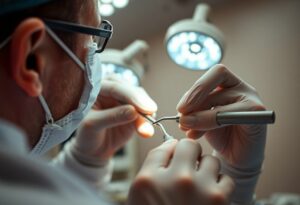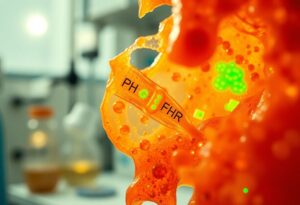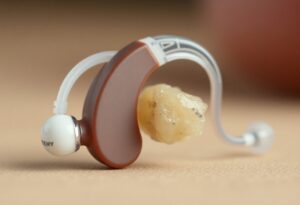Most people experience earwax buildup at some point, and knowing how to remove it safely can help you maintain your ear health. In this guide, you will learn about various tools and techniques for manual earwax removal, along with important safety tips to prevent injury or infection. By understanding the proper methods and precautions, you can effectively manage earwax in the comfort of your own home.
Key Takeaways:
- Use appropriate tools like curettes and ear spoons for safe earwax removal.
- Techniques should emphasize gentle movements to avoid ear canal damage.
- Prioritize cleanliness and consider using disposable tools to reduce infection risks.
The Anatomy of Earwax: Functions and Myths
The Purpose of Earwax: More Than Just a Nuisance
Earwax, or cerumen, serves several important functions beyond being an annoyance. It protects your ear canal by trapping dust, debris, and microorganisms, thus reducing the risk of infections. The wax also provides a natural lubricant to prevent dryness and itching, maintaining the health of your ear canal. In this way, earwax plays a vital role in your auditory health, ensuring your ears remain clean and functional.
Debunking Common Myths About Earwax
Numerous myths surround earwax, often leading to misunderstanding about its nature and role. For example, some believe that earwax accumulation is solely related to poor hygiene, while in reality, your body produces it as a natural defense mechanism. Others may think that all earwax should be removed for optimal health, neglecting that excessive cleaning can lead to irritation or blockage. By clarifying these misconceptions, you can better appreciate the importance of earwax.
Many people falsely assume that earwax is inherently dirty or a sign of neglect. In fact, its purpose is protective; excess cleaning can disrupt the natural balance. Furthermore, variations in earwax composition indicate genetic differences, as echoed in studies showing that individuals of different ethnic backgrounds produce earwax of varying consistency—wet or dry. Recognizing that earwax is not just a nuisance but rather an integral component of your ear’s health empowers you to manage your ear hygiene more effectively.
Essential Tools for Manual Earwax Removal
Recommended Instruments for Safe Extraction
For effective and safe earwax removal, consider using instruments like an otoscope, which allows you to visualize the ear canal, and a curette designed for earwax extraction. Other helpful tools include softening drops that facilitate wax removal and bulb syringes for gentle irrigation. Always opt for quality materials to ensure safety and minimize injury risks during the process.
DIY Solutions: Household Items That Can Help
Common household items can aid in earwax management, including mineral oil, hydrogen peroxide, and warm water. These items can help to soften the earwax, making it easier to remove. Applying a few drops of oil or solution can significantly reduce discomfort while enhancing the effectiveness of manual removal.
Utilizing mineral oil or hydrogen peroxide can be a simple yet effective method to manage earwax buildup. For instance, placing a few drops in your ear for several days can soften stubborn wax, allowing for easier removal with a soft washcloth or bulb syringe. Additionally, warm water can help flush out softened wax, ensuring a gentler experience. Always exercise caution with DIY methods to prevent potential damage to your ear canal.
Step-by-Step Techniques for Safe Earwax Removal
| Technique | Description |
| The Warm Water Flush Method | Uses warm water to soften earwax and facilitate removal. |
| The Use of Saline Solutions | Employs saline to soften and dislodge earwax buildup. |
| Proper Use of Ear Wax Removal Kits | Involves the safe application of specialized tools and solutions. |
The Warm Water Flush Method
Using the warm water flush method involves gently introducing warm water into your ear canal to soften earwax. Fill a bulb syringe with warm water and tilt your head sideways. Squeeze the syringe gently to allow the water to flow into your ear canal, then tilt your head the opposite way to let the water and softened wax drain out. This method is effective and minimizes discomfort.
The Use of Saline Solutions
Saline solutions can aid in softening stubborn earwax before removal. By using a saline solution, you can unclog the earwax buildup, making it easier to flush out. A mixture of warm water and salt can serve this purpose effectively.
To create a saline solution, mix one teaspoon of salt in half a cup of warm distilled water. Use a dropper to gently insert a few drops into your ear while tilting your head. Allow it to sit for a moment before tilting your head back to let the solution and wax exit. This method can be conducted several times a week if needed and is particularly safe.
Proper Use of Ear Wax Removal Kits
Utilizing ear wax removal kits involves following the manufacturer’s instructions precisely. These kits typically include softening drops, syringes, and suction devices designed for safe removal. Ensure you comprehend the process to maximize effectiveness and minimize risks.
Start by applying the softening drops to your ears as instructed, allowing them to work for the recommended duration. After the allotted time, use the syringe with warm water or saline to flush the ears. Always opt for gentle, steady pressure when using a suction device, being cautious not to insert it too deeply into the ear canal to prevent damage.
Red Flags: When to Avoid Manual Removal
Signs of Infection or Complication
Noticeable symptoms such as persistent ear pain, swelling, redness, or discharge from your ear necessitate immediate caution. If you detect a foul odor or a significant amount of pus, these could be indicators of an infection. In such cases, refrain from attempting any manual removal and seek medical advice promptly.
Understanding When Professional Help is Necessary
Certain situations require professional intervention rather than manual removal. If you experience severe pain, hearing loss, or if previous attempts at removal have led to complications such as bleeding or blockage, a healthcare provider should assess your condition. Additionally, if you have a history of ear surgery or ear-related health issues, consulting a specialist is advisable.
Professional help is often vital when you encounter stubborn wax buildups or if self-removal methods do not yield results. Healthcare providers utilize specialized instruments and techniques to safely address earwax issues, minimizing the risk of damaging the ear canal or eardrum. They can also evaluate any underlying conditions that may exacerbate earwax problems. Always prioritize professional evaluation if the situation seems beyond your control.
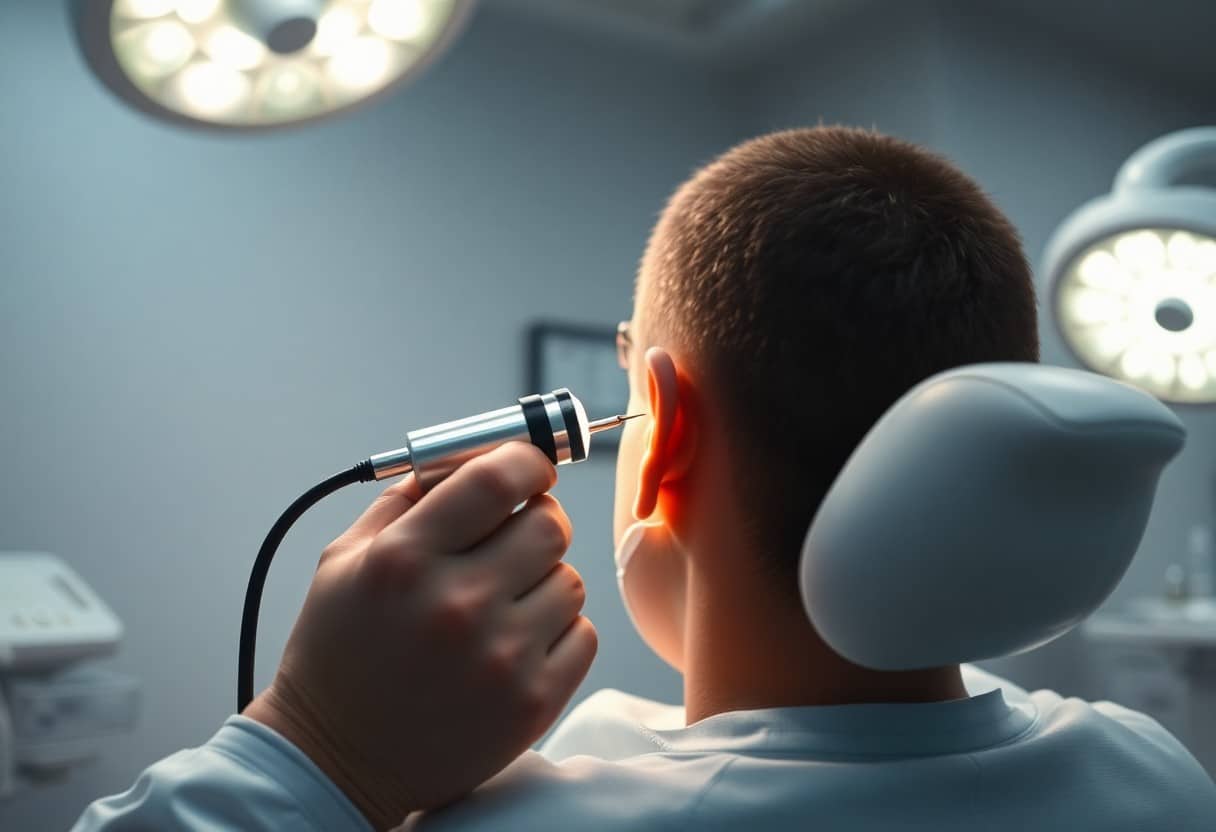
Safety Protocols to Follow During Earwax Removal
Hygiene Practices to Minimize Risk
To minimize the risk of infection or complications during earwax removal, maintaining high hygiene standards is necessary. Always wash your hands with soap and water before beginning the process. Use sterile or freshly cleaned tools for any manual removal techniques. If you’re using drops or solutions, ensure that bottles or applicators are not contaminated by avoiding contact with your ears or any surfaces that may harbor bacteria.
Techniques to Prevent Damage to the Eardrum
Utilize gentle techniques to prevent the risk of injury to your eardrum during earwax removal. Avoid inserting tools deep into your ear canal, and always keep the instruments at least a quarter of an inch from your eardrum. Softening the wax with drops before removal can also help, as it reduces the need for aggressive scrubbing or poking that may compromise your eardrum’s safety. In case of uncertainty, seeking professional assistance is advisable.
Keeping the ear canal dry and free of excessive moisture can also aid in preventing damage to the eardrum. Using a bulb syringe with warm saline solution to flush the ear gently can help dislodge wax without making contact with the eardrum. This method allows for a safer environment by ensuring that you do not accidentally push solid wax deeper into the canal where it might cause obstruction or leakage, both of which can lead to painful situations or infections.
Enhancing Ear Health Post-Removal
Best Practices for Ear Care After Extraction
Once you have successfully removed earwax, keeping your ears clean and dry is crucial. Avoid inserting any objects into the ear canal, including cotton swabs. Instead, gently wipe the outer ear with a damp cloth. Additionally, consider using ear drops formulated for ear health to maintain moisture and prevent irritation. Regularly inspecting your ears and maintaining a balanced diet rich in omega-3 fatty acids can also promote optimal ear health.
Natural Remedies to Prevent Recurrence
Incorporating natural remedies into your routine can help prevent earwax buildup. Olive oil or almond oil can be applied a few drops in your ears weekly to soften wax. Garlic oil is another effective option due to its antimicrobial properties. Herbal remedies, such as using witch hazel or tea tree oil, can help provide alternative solutions. Staying hydrated and maintaining ear hygiene are also beneficial practices.
In addition to using olive or almond oil, consider a weekly routine to foster ear health. Creating a mixture of one part vinegar and two parts water to gently rinse your ears can help balance the pH and reduce the risk of excessive wax buildup. Regularly cleansing your outer ear with a gentle, alcohol-free solution can also minimize wax accumulation. Combining these practices will significantly enhance the effectiveness of natural remedies, ensuring your ears remain clean and healthy for the long term.
The Psychology Behind Earwax Removal: Behavioral Insights
Why We Feel Compelled to Clean Our Ears
The desire to clean your ears often stems from a natural inclination toward personal hygiene. This behavior is reinforced by societal norms that equate cleanliness with health and attractiveness. Many individuals experience discomfort or anxiety if they perceive earwax accumulation, leading to a strong compulsion to remove it. The tactile sensation of cleaning, paired with the immediate satisfaction of perceived improvement, also fuels this urge.
The Impact of Cultural Beliefs on Ear Maintenance
Cultural beliefs significantly shape how societies approach ear maintenance practices. In some cultures, earwax removal is viewed as a routine health necessity, while in others, it may carry spiritual or traditional significance. For instance, in many Asian cultures, ear cleaning is seen as a sign of care, leading to frequent practices involving family or community members. Such beliefs can influence how individuals prioritize ear hygiene, resulting in varying perceptions of the safety and necessity of manual earwax removal methods.
In Japan, for example, ear cleaning is a traditional practice often done by specialized practitioners, emphasizing a communal aspect of personal care. This cultural approach not only shows the sociability surrounding ear cleaning but also impacts behaviors, with many people considering their ear health as part of overall wellness. The communal ritual of ear cleaning could encourage you to adopt different tools and techniques based on generational practices, reflecting how cultural contexts dictate personal hygiene perceptions.
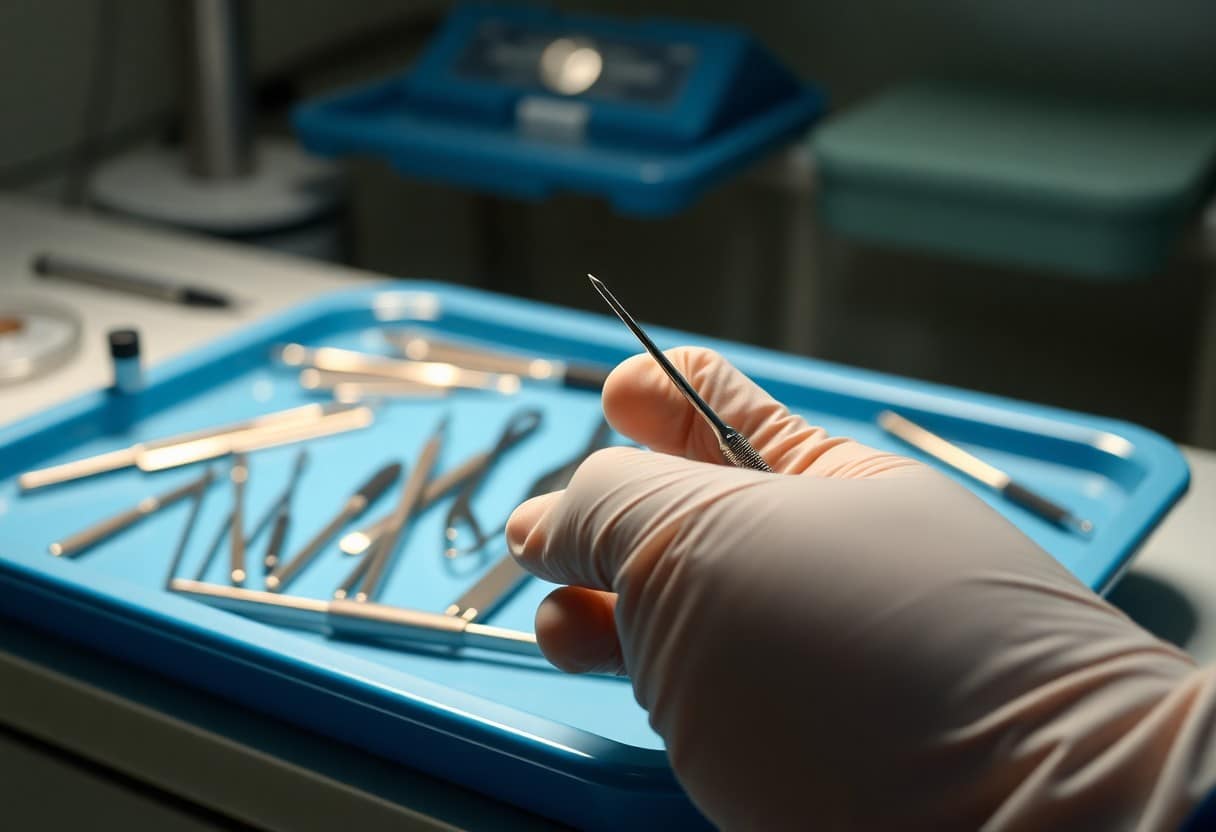
The Expert’s Perspective: Advice from an Audiologist
Insights on Manual vs. Professional Removal
Manual removal can be effective for minor buildups, but professional intervention is recommended for excessive wax or complications, such as blockage. Audiologists emphasize proper technique and tools over DIY methods, as improper removal may lead to injury or further impaction. A professional’s experience also allows for thorough examination of the ear canal, ensuring no underlying conditions are overlooked, which ultimately contributes to better ear health.
Tips for Maintaining Healthy Earwax Levels
Maintaining healthy earwax levels involves a balanced approach to ear hygiene. Regular cleaning of the outer ear with a damp cloth prevents buildup, while avoiding the insertion of foreign objects, like cotton swabs, keeps the ear canal intact. Ensuring that your ear produces enough wax protects against infections and irritants. The goal is to keep your ears clear without overdoing interventions.
- Use a damp cloth to clean the outer ear regularly.
- Avoid inserting objects like cotton swabs into your ear.
- Stay hydrated to support your body’s natural earwax production.
- Consult a healthcare provider if you notice changes in your earwax.
- Consider periodic professional ear cleanings for excess buildup.
- The need for regular ear check-ups can help you maintain ear health.
Earwax plays a vital role in protecting your ears, so promoting its natural function is key. Maintaining regular hydration aids in adequate earwax production, creating a barrier against dust and microorganisms. If you use earplugs or headphones frequently, ensure to clean these items as they can introduce bacteria to the ear canal. Routine check-ups with an audiologist can help evaluate your ear health and preemptively address any wax-related issues. The balance between cooperation with your body’s natural processes and necessary interventions is necessary for long-term ear health.
- Monitor your earwax levels; observe any significant changes.
- Incorporate protective measures when swimming or bathing.
- Limit the use of headphones to lessen earwax compaction.
- The interplay of proper care practices will enhance overall ear health.
Conclusion
Conclusively, mastering manual earwax removal requires an understanding of the appropriate tools and techniques while prioritizing your safety. Utilizing implements like curettes or earwax spoons with care can help maintain ear hygiene effectively. Always ensure your environment is clean, and never insert objects deep into your ear canal to avoid injury. By applying these safety tips, you can confidently manage earwax buildup, ensuring optimal ear health and comfort.
FAQ
Q: What are the common tools used for manual earwax removal?
A: Common tools include ear curettes, wax softening drops, irrigation syringes, and suction devices. Each tool serves a specific purpose in safely removing earwax.
Q: What techniques are effective for safe earwax removal?
A: Effective techniques involve softening the wax with drops, gently using a curette to scoop out wax, and irrigation with warm water. It’s important to be gentle and avoid causing damage to the ear canal.
Q: Are there safety tips to follow during manual earwax removal?
A: Yes, some safety tips include using sterile tools, avoiding deep insertion into the ear canal, not using cotton swabs, and seeking professional help if there are symptoms of infection or significant blockage.
Q: When should I consult a healthcare professional for earwax removal?
A: Consult a healthcare professional if experiencing pain, hearing loss, or persistent blockage. Additionally, if home techniques do not provide relief, professional removal may be necessary.
Q: Can earwax removal tools be harmful if used incorrectly?
A: Yes, improper use of earwax removal tools can lead to injury, ear canal damage, or infection. It is important to use tools correctly and consider professional assistance when unsure.
